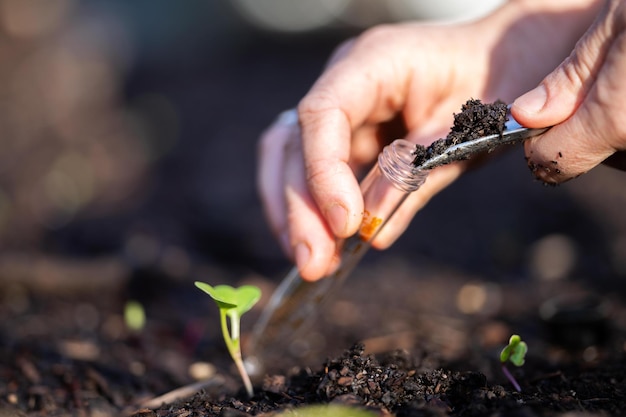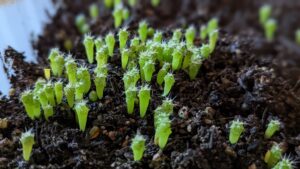Soil, much like the skin beneath our feet, serves as a protective layer that nourishes life, supporting a myriad of plants and organisms. Understanding its porosity is akin to deciphering a language; each pore reveals secrets about water retention, aeration, and ultimately, the health of the plants we nurture. This guide will navigate you through the labyrinth of soil porosity testing, illuminating the path towards thriving plant health with every step.
Porosity, the ratio of void spaces to the total volume within a soil sample, is an essential parameter that influences plant health. Cultivators must comprehend this concept, as it directly affects water infiltration, nutrient absorption, and root development. Below, we delve into the elements of discovering soil porosity and implementing sound practices to foster robust growth.
Examining your soil does not necessitate an agronomist’s degree. With a handful of simple tools and a modicum of patience, you can unveil the hidden life within the dark depths of your garden or field.
Understanding the Fundamentals of Soil Porosity
The first step in unraveling the mystery of soil porosity is grasping its foundational elements. Soil is primarily made up of solid particles — sand, silt, and clay — as well as the organic matter that nourishes it. Each type of particle possesses a unique size and shape, influencing the configuration of pore spaces found in the soil matrix.
You may think of sand as the big, boisterous partygoer, taking up space and leaving room for large gaps, which allows for rapid water drainage. Conversely, clay is the meticulous artist, filling in the spaces with fine details, resulting in dense, tightly packed environments that retain moisture. Silt, the middle-ground, acts as a gentle mediator, balancing the characteristics of both sand and clay, providing a textured playground for plant roots.
Recognizing the significance of soil texture is vital in determining the porosity, which can range from well-drained to overly compacted. In deciduous woodlands, for instance, the soil is often rich in organic matter, leading to enhanced porosity conducive to plant life. However, compacted or poorly drained soil can induce stress in plants, stunting their growth.
Preparing for the Soil Porosity Test
Before you embark on the adventure of testing soil porosity, ensure you have gathered the necessary instruments. To embark on this journey, you will require:
- A clean, transparent container (e.g., jar or cup).
- A measuring cup for water.
- A sample of soil — taken from various spots for accuracy.
- A ruler or measuring tape for measuring the height of the water column.
Once these instruments are in hand, you are ready to begin. The process, though simple, bears the mark of precision, ensuring the accuracy of your findings.
Step-by-Step Guide to Testing Soil Porosity
1. Gather a sample of soil from the area of interest. Aim to collect from several spots to obtain a representative sample. Allow the soil to dry, crumbling any large aggregates as necessary.
2. Fill your clean container with about one cup of the dry soil.
3. Pour water slowly into the container until the soil is fully saturated. This may take time, as the soil will initially absorb water. Watch closely—this moment is crucial. You must wait until no more air bubbles rise to the surface, indicating saturation.
4. Mark the level of the water with your ruler. This represents the total volume of water required to fill the voids in your soil sample.
5. Once saturated, gently remove excess water so that you can measure the remaining water column. Note this level, as it reflects the amount of porosity in your soil sample.
6. Calculate the porosity using the formula: Porosity (%) = (Volume of water / Total volume of soil) x 100. This formula reveals the percentage of void space within your soil, allowing you to assess its capacity for water retention.
Deciphering Your Results: The Language of Soil
The true beauty of your findings lies in understanding how to interpret them. A higher porosity percentage suggests an abundance of space for air and water, fostering a healthy environment for root growth. Favorable percentages generally range between 30% to 60%, indicating soil that can sustain diverse plant life.
Conversely, low porosity readings may signify a heavy clay composition or compaction, both of which hinder proper aeration and drainage. If your results yield disappointing figures, consider strategies to improve the soil structure, such as adding organic matter, creating drainage channels, or implementing crop rotation.
Sculpting New Possibilities: Enhancing Soil Health
Now that the veils are lifted on soil porosity, it is imperative to consider its implications on plant health. Like a painter understands the color wheel, a gardener must recognize how tweaking porosity enhances growth potential. By applying techniques such as mulching, cover cropping, and proper watering practices, you can cultivate a vibrant ecosystem that signifies a commitment to plant health.
Moreover, regularly testing your soil will empower you to monitor changes and adapt your practices accordingly. Each reading tells a story of the conditions that influence your crops and landscapes. The exhilarating dance of science and nature unfolds at your very fingertips, with the promise of life renewed and revitalized.
In conclusion, measuring soil porosity transcends mere curiosity; it serves as the cornerstone for nurturing healthy plants and fostering sustainable gardening practices. With each test, you equip yourself with knowledge, enabling you to become a steward of the earth, capable of transforming barren ground into flourishing habitats. Embrace this journey, and allow the secrets of the soil to guide your growth, one pore at a time.





Leave a Comment